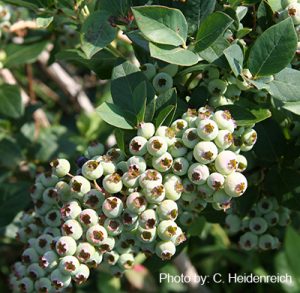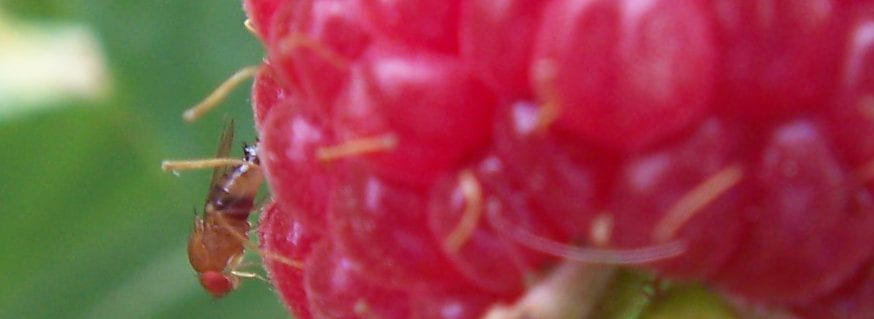Although SWD numbers in western NY remain low, sustained catch of 1 female and 1 male SWD in a trap set on the edge of a blueberry planting was obtained in Niagara County on June 16, 2020. These traps are being monitored by Liz Tee, Lake Ontario Fruit Program, Cornell Cooperative Extension.

Reports of purple color showing up on blueberry fruit harkens ripening and the upcoming harvest. Please prepare to manage SWD in tender fruit crops when they are ripe.
A good approach during harvest is to check fruit with salt flotation periodically. This is especially important if you are planning a low- to no-spray approach to managing SWD, so that you know when fruit is infested and you may need to shut down picking operations, do a clean harvest, and up your spray program. Check out, Guidelines for Checking Fruit for SWD Larvae in the Field, authored by Laura McDermott, ENYCHP.
Pest management for SWD includes:
- Mowing – to reduce humidity and niches for SWD harborage and to increase sun penetration.
- Weed management – to reduce humidity, alternate fruiting hosts and harborage and to increase sun penetration.
- Pruning – to reduce humidity and to increase sun and spray penetration.
- Monitoring – to know if SWD is present when fruit is ripening.
- Sanitation – to reduce reproduction harborage and overall SWD population.
- Cold storage – to slow or kill any eggs and larvae in harvested fruit.
Online Resources:
SWD Management, fruit.cornell.edu/spottedwing/management/ on Cornell Fruit Resources.
Insecticide Quick Guides for NY State are found here:
- For berry crops http://www.hort.cornell.edu/fruit/pdfs/swd/berry-insecticides.pdf
- For stone fruit and grapes http://www.hort.cornell.edu/fruit/pdfs/swd/treefruit-grape-insecticides.pdf

